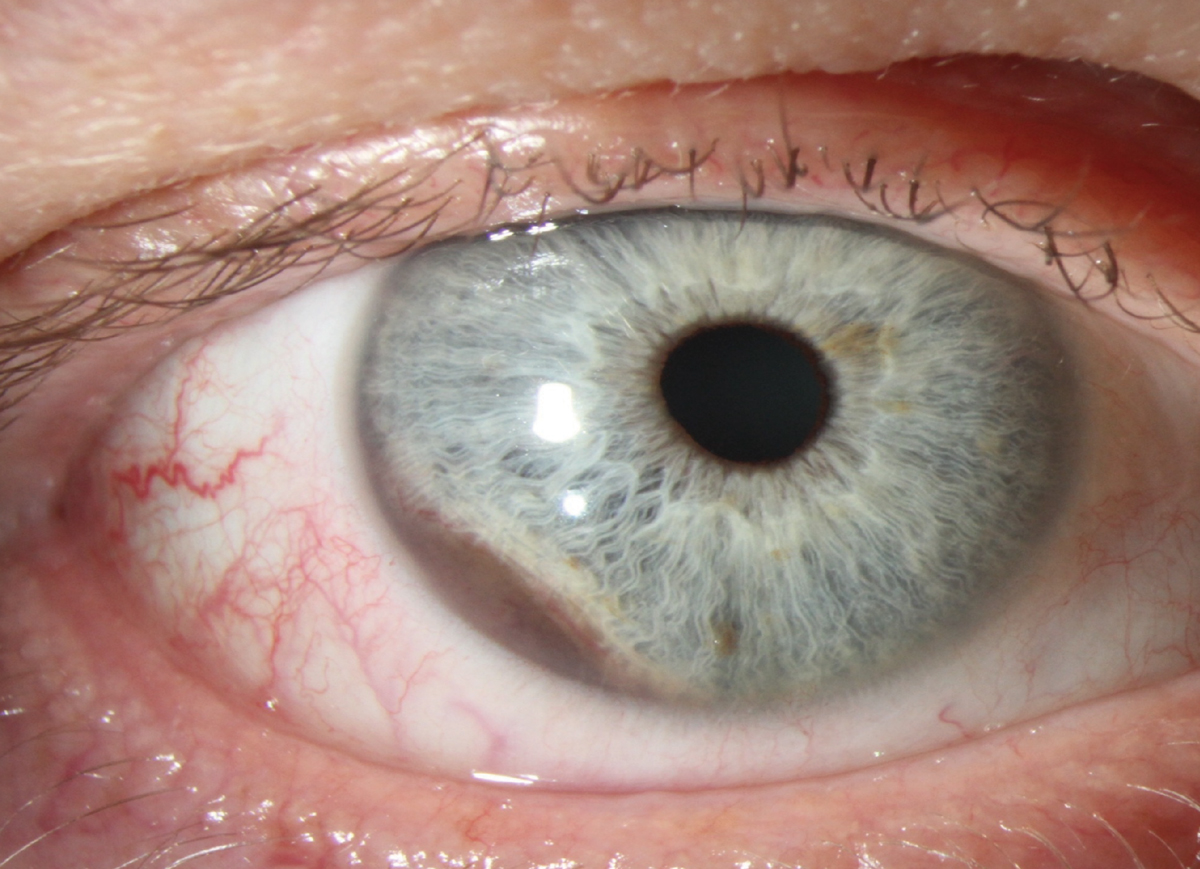 |
|
Clinicians know to be more vigilant for uveal melanoma in blue-eyed patients, and this research helps explain the genetic associations that give rise to the elevated risk. Photo: Jerome Sherman, OD, and Sherry Bass, OD. Click image to enlarge. |
In genetics, single-nucleotide polymorphisms (SNPs) are small variants in the code that can yield clues to inheritance patterns of any number of phenotypes. One SNP responsible for blue eye color—the G/G genotype of rs12913832 (HERC2)—is not only a genetic factor that influences the risk of uveal melanoma (UM) but is also connected to a worse prognosis. This is due to its association with an increased likelihood of developing high-risk UM, particularly those with monosomy of chromosome 3, according to findings from a study recently published in the journal Ophthalmology.
“Uveal melanoma is a rare disease, with the highest incidence in people with a fair skin and light eyes,” the study authors noted in their paper. “Eye color is largely genetically determined and defined by a set of SNPs. We set out to determine whether we could identify a SNP that is related to prognosis.”
In this analysis, researchers sequenced DNA from the peripheral blood mononuclear cells of 392 patients with uveal melanoma and acquired the genotype of six common eye color-related SNPs. They then compared clinical and histopathologic tumor characteristics, tumor chromosome status and patient survival in patients with different genotypes. The primary outcome measure of this study was uveal melanoma-related survival.
|
Click here to read a case that discusses the medicolegal risks involved in iris melanoma assessment. |
Among study participants, 307 (78%) had blue eyes, 74 (19%) brown eyes and 11 (3%) could not be assigned to either blue or brown. The 11 cases who could not be categorized as either blue or brown were excluded from analyses based on genetic eye color; however, these patients were included in analyses based on genotypes.
Data revealed that patients with a genetically blue eye color had a worse survival and those with the SNP in question “had a worse prognosis, which was related to more often having high-risk tumors (monosomy of chromosome 3) than patients with an A/G or A/A genotype,” the study authors reported.
“Our results show that HERC2 may not only be a genetic factor that influences the risk of developing a UM, but that specific HERC2 SNPs are linked to the development of risk factors related to survival. Whether this is a direct functional link remains to be established,” they concluded while discussing their research in Ophthalmology.
Gelmi MC, Houtzagers LE, Wierenga APA, et al. Survival in uveal melanoma patients is linked to genetic variation at HERC2 SNP rs12913832. Ophthalmology. September 7, 2024 [Epub ahead of print]. |


